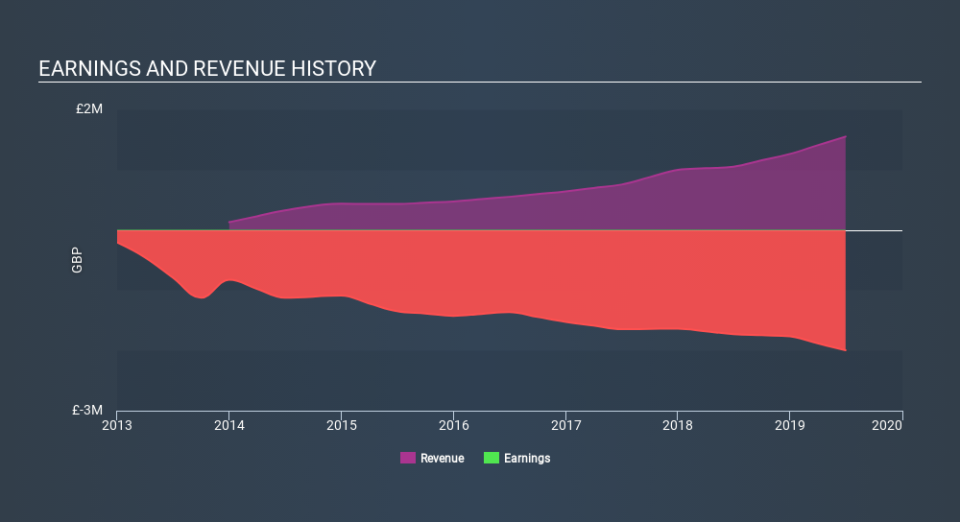With A -16% Earnings Drop, Is Gusbourne PLC's (LON:GUS) A Concern?

After looking at Gusbourne PLC's (AIM:GUS) latest earnings announcement (30 June 2019), I found it useful to revisit the company's performance in the past couple of years and assess this against the most recent figures. As a long term investor, I pay close attention to earnings trend, rather than the figures published at one point in time. I also compare against an industry benchmark to check whether Gusbourne's performance has been impacted by industry movements. In this article I briefly touch on my key findings.
Check out our latest analysis for Gusbourne
Despite a decline, did GUS underperform the long-term trend and the industry?
GUS is loss-making, with the most recent trailing twelve-month earnings of -UK£2.0m (from 30 June 2019), which compared to last year has become more negative. Furthermore, the company's loss seem to be growing over time, with the five-year earnings average of -UK£1.3m. Each year, for the past five years GUS has seen an annual increase in operating expense growth, outpacing revenue growth of 30%, on average. This adverse movement is a driver of the company's inability to reach breakeven.
Inspecting growth from a sector-level, the UK beverage industry has been enduring some headwinds over the previous year, leading to an average earnings drop of -8.4%. This is a major change, given that the industry has been delivering a positive rate of 9.9%, on average, over the last five years. This growth is a median of profitable companies of 10 Beverage companies in GB including Distil, Shepherd Neame and Britvic. This means any near-term headwind the industry is experiencing, it’s hitting Gusbourne harder than its peers.
Given that Gusbourne is currently unprofitable, with operating expenses (opex) growing year-on-year at 22%, it may need to raise more cash over the next year. It currently has UK£481k in cash and short-term investments, however, opex (SG&A and one-year R&D) reachedUK£2.6m in the latest twelve months. Although this is a relatively simplistic calculation, and Gusbourne may reduce its costs or open a new line of credit instead of issuing new equity shares, the analysis still gives us an idea of the company’s timeline and when things will have to start changing, since its current operation is unsustainable.
What does this mean?
While past data is useful, it doesn’t tell the whole story. With companies that are currently loss-making, it is always difficult to predict what will happen in the future and when. The most useful step is to examine company-specific issues Gusbourne may be facing and whether management guidance has steadily been met in the past. You should continue to research Gusbourne to get a better picture of the stock by looking at:
Financial Health: Are GUS’s operations financially sustainable? Balance sheets can be hard to analyze, which is why we’ve done it for you. Check out our financial health checks here.
Other High-Performing Stocks: Are there other stocks that provide better prospects with proven track records? Explore our free list of these great stocks here.
NB: Figures in this article are calculated using data from the trailing twelve months from 30 June 2019. This may not be consistent with full year annual report figures.
If you spot an error that warrants correction, please contact the editor at editorial-team@simplywallst.com. This article by Simply Wall St is general in nature. It does not constitute a recommendation to buy or sell any stock, and does not take account of your objectives, or your financial situation. Simply Wall St has no position in the stocks mentioned.
We aim to bring you long-term focused research analysis driven by fundamental data. Note that our analysis may not factor in the latest price-sensitive company announcements or qualitative material. Thank you for reading.


